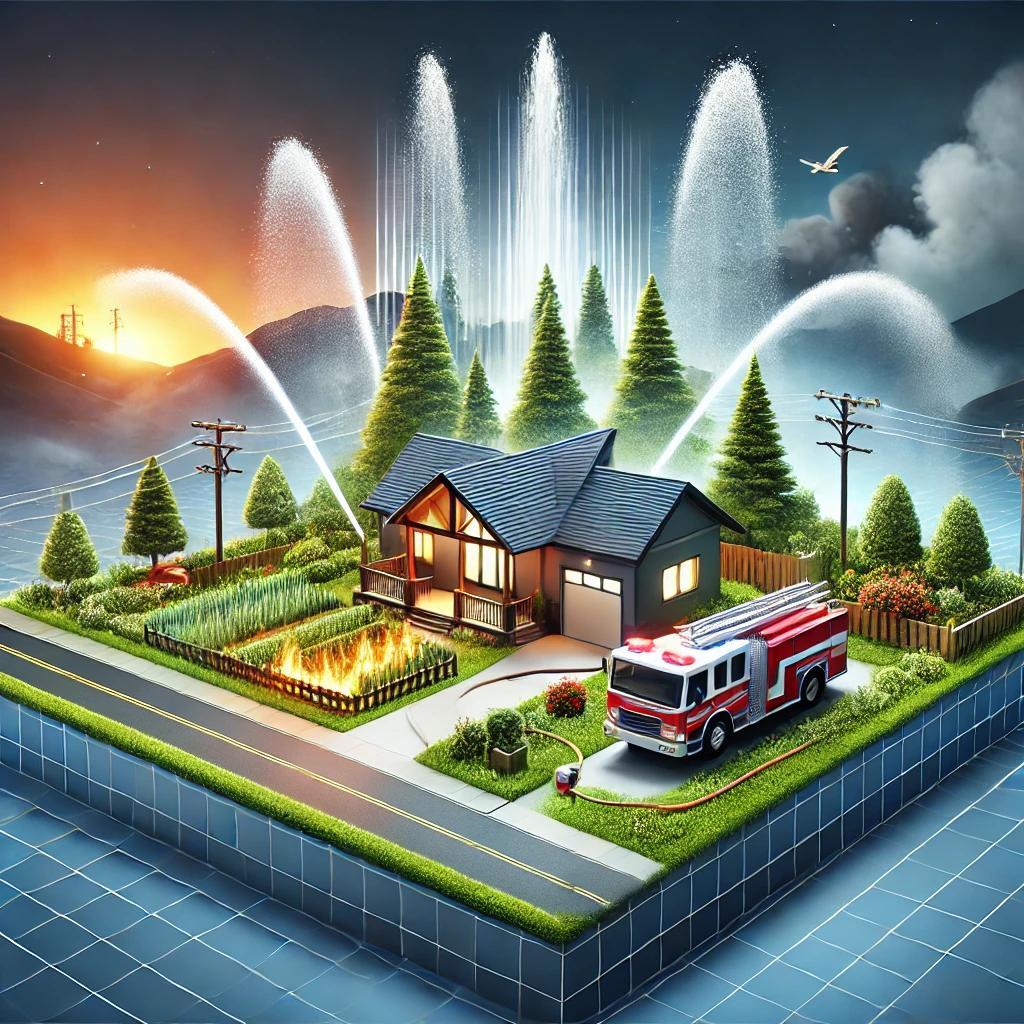How Can You Safeguard Your Home Against Wildfires?

Wildfires pose a relentless threat across North America, amplified by increasing annual temperatures, gusty winds, and severe droughts. Annually, over 78,000 wildfires devastate more than 12.4 million acres in the United States and Canada. Whipped up by strong winds and fueled by dry grass, trees, and shrubs, these fires endanger thousands of homes each year.
In 2017, California, British Columbia, and Oregon were severely affected, with tens of thousands of acres going up in flames. Most people assume wildfires are a summer phenomenon due to drier forests and an uptick in outdoor activities like camping, which can inadvertently ignite fires. Summer also brings more lightning strikes, a primary wildfire cause. Despite this, heavy smoke from wildfires disrupted life in Idaho as late as September 2017. Firefighters in Oregon battled a blaze that lasted nearly three months into late fall.
Though often associated with western North America, wildfires aren't limited to this region. In 2017, Ontario experienced nearly 300,000 acres of forest burning across 776 fires. The Florida Everglades, too, occasionally catch fire, spreading ash to the suburbs of South Florida and nearing communities in central and southwestern areas, particularly during the drier winter months.
In communities with small lots and closely-built homes, the threat of wildfires is particularly severe. Wind conditions can easily allow fires to leap from one house to the next. Thus, it’s crucial for property managers and community boards in high-risk areas to establish and share fire prevention strategies to safeguard homes and neighborhoods. Failing to take these safety measures can lead to unnecessary risk.
The initial step in wildfire prevention is understanding the fire risk in your locality. Engage with local fire departments and emergency management officials for insights into the fire risk in your area and specialized tips for ensuring the safety of your family, home, and community. If you reside in a wildfire-prone area, gaining knowledge on how to mitigate fire risks to your home is paramount.
Here’s some valuable advice to help you get started:
1. Clean Your Gutters
Airborne embers are a serious wildfire hazard, and when these embers land in gutters filled with debris, they can ignite a fire. Mitigate this risk by conducting regular gutter clean-outs, especially before the onset of summer or dry winter months.
2. Pressure Wash Your Roof
Roofs are an inviting landing spot for embers, more so if they are covered in dry leaves and dust. Regular pressure washing of your roof can prevent potential fires.
3. Implement a Fuel Modification Zone
This zone, typically determined by fire departments, acts as a buffer between your property and wildfires. It involves removing flammable vegetation and replacing it with fire-resistant plants. Even if it's not mandated in your area, it's wise to assess your surroundings and eliminate fire hazards, such as tree branches hanging over your roof.
4. Clear Space Around Your Home
Create a defensible perimeter around your home by trimming trees and brush within a 30-foot radius. Continuously remove dead wood and debris beyond this space to prevent providing fuel for possible fires.
5. Follow Local Landscaping Guidelines
Local fire departments and community associations may have specific landscaping rules aimed at reducing wildfire risks. Stay informed through community events and newsletters to ensure your home is well-protected.
6. Choose Fire-Resistant Plants
Opt for fire-resistant plants that conserve moisture in dry conditions. Local nurseries and landscapers can offer advice on suitable plants for your area. Ensure trees are planted at safe distances from your home, ideally 30 feet apart, to prevent flames from spreading.
7. Prune Overgrown Vegetation
Unmaintained trees and bushes pose significant fire risks. Trim trees to a height of eight to 10 feet, especially before dry seasons.
8. Regularly Test Fire Equipment
Check your fire safety equipment, such as extinguishers and sprinkler systems, at least twice a year to ensure they're functioning correctly. Community associations should ensure regular equipment inspections.
9. Prepare an Evacuation Plan
In the event of a fire, having an evacuation plan is crucial. Make sure all family members know the procedure and keep essential documents and supplies ready for quick relocation. Digitize important documents and store them securely for easy access during emergencies.
Effective communication is vital, and a reliable property management system can provide mass alerts to residents during wildfire emergencies.
While wildfires are unpredictable, understanding the risks and proactively protecting your home can significantly enhance safety.





